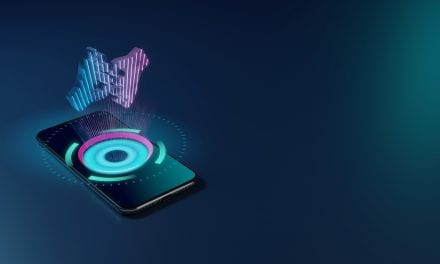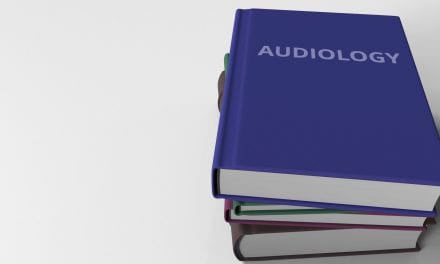Letters | February 2018Hearing Review
Editor’s note: This letter was originally addressed to members of the Technical Committee at the European Hearing Instrument Manufacturer’s Association (EHIMA), and was also submitted to The Hearing Review by Dr Sterkens.
Dear EHIMA TC Members:
Hearing loops greatly help hearing aid and cochlear implant users.1 To benefit from the increasing number of properly installed loops, worldwide (one that meet IEC 60118-4), consumers need access to a vertical telecoil with a frequency response that closely matches the microphone sensitivity at equal input levels for the speech frequencies (70 dB SPL vs 100 mA/m inputs)—something called transparency.
Recently, WG 13_ IEC60118-0 moved the SPLIV and Equivalent Test Loop Sensitivity (ETLS) sections from an annex to the main body of the standard. This should reveal, at least in the reference test mode, whether telecoils are appropriately vertically positioned and whether the hearing aid output SPL between microphone and induction input modes in the “as worn” position are transparent.
However, when some hearing aids with vertical telecoils and good Relative Simulated Equivalent Telephone Sensitivity (RSETS)/ETLS values are switched from test to programmed mode, a disparity occurs in the mic vs telecoil and/or M+T programs. McBride and Valente2,3 have shown that a variety of combinations of mismatching in performance curves occur.
Obviously, when the mic and t-coil programs are not transparent, audiologists and hearing loop installers do not understand the consumer’s poor experience with their hearing aid in loop.
Consumers may find their telecoil experience in a hearing loop is either: 1) too loud or 2) too soft; 3) the instrument lacks clarity; 4) their hearing aid is: 5) too loud or 6) too soft for ambient sounds relative to T in an M+T program; or the loop signal is: 7) too loud, or 8) too soft in the M+T program.
Providers, who may have verified the gain settings with real-ear but are unaware of the lack of transparency in the telecoil programs, may unwittingly make inappropriate telecoil program adjustments in an attempt to improve their client’s loop experience. Mic vs. telecoil response discrepancies unnecessarily complicate the job for audiologists, as this problem occurs not just between different hearing instrument manufacturers but also within a manufacturer’s product line, issues that can frequently only be detected after the programming is completed and the instrument is decoupled from the programming software cables.
Hearing loop installers are called back for hearing loop performance verification checks or otherwise blamed for the consumer’s inability to benefit from a loop.
Until a new universal digital wireless standard becomes available (one loop advocates are ready to support when that time comes), consumers need good telecoils, as well as hearing loops that meet the IEC standard. It is the hearing aid manufacturers who should make every effort to ensure their hearing aids offer quality, properly positioned telecoils, and telecoil responses that are as identical as possible to the user’s Mic response in the programmed state of the instruments, and not only in the ANSI test mode, as this will improve consumer satisfaction.4
We urge the manufacturers to also spend time educating providers on telecoil intricacies and orientation, and programming optimization of the T and M+T settings, as well as inform consumers of the benefits of telecoils.
— Mead Killion, PhD; Ingrid McBride, PhD; David Myers, PhD; Juliette Sterkens, AuD; and Michael Valente, PhD.
Original citation for this article:Killion M, McBride I, Myers D, Sterkens J, Valente M. Letters: Comments on hearing loops.Hearing Review. 2018;25(2):42
References
-
Kochkin S, Sterkens J, Compton-Conley C, et al. Consumer perceptions of the impact of inductively looped venues on the utility of their hearing devices. Hearing Review. 2014;21(10):16-26. Available at: https://hearingreview.com/2014/09/consumer-perceptions-impact-inductively-looped-venues-utility-hearing-devices/
-
McBride I. Induction induction what’s your function? November 5, 2014. Available at: http://eo2.commpartners.com/users/audio/downloads/Handouts_BW_-_Induction_Induction_Whats_Your_Function.pdf
-
Valente M. The telecoil: The lonely transducer that can be a big producer. June 24, 2013. Available at: https://www.audiologyonline.com/articles/telecoil-lonely-transducer-that-big-11911
-
Kochkin S. Increasing hearing aid adoption through multiple environmental listening utility. Hear Jour. 2007;60(11)[Nov]:28-31. Available at: http://www.phonak.com/content/dam/phonak/b2b/FM_eLibrary/Increasing_hearing_aid_adoption_through_multiple_environmental_listening_utility.pdf






I firmly believe that hearing loops and telecoils are underutilized. Is it possible that the hearing industry would rather talk about new “sexy” developments such as Made for iPhone technology rather than telecoils? Consumers who own iPhones but without hearing aids can benefit from hearing loops by using LoopBuds made by OTOjOY.
My grandmother has been using hearing loops for a quite some time already and I have noticed major changes in her hearing. She doesn’t seem to be bothered that much by the loops while her hearing has improved dramatically. So it’s never too late to check new technologies, even when you’re in your 70 already.
Best wishes,
Henry from https://www.bizset.com/